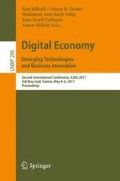Abstract
A social network enables individuals to communicate with each other by posting information, comments, messages, images, etc. In most applications, a social network is modelled by a graph with vertices and edges. Vertices represent individuals and edges represent social interactions between the individuals. A social network is said to have community structure if the nodes of the network can be grouped into sets of nodes such that each set is densely connected internally. The investigation of the community structure in the social network is an important issue in many domains and disciplines such as marketing and bio-informatics. Community detection in social networks can be considered as a graph clustering problem where each community corresponds to a cluster in the graph. The goal of conventional community detection methods is to partition a graph such that every node belongs to exactly one cluster. However, in many social networks, nodes participate in multiple communities. Therefore, a node’s communities can be interpreted as its social circles. Thus, it is likely that a node belongs to multiple communities. We propose in this paper a new overlapping community detection method which can be adopted for several real world social networks requiring non-disjoint community detection.
Access this chapter
Tax calculation will be finalised at checkout
Purchases are for personal use only
References
Agarwal, N., Liu, H., Tang, L., Yu, P.S.: Identifying the influential bloggers in a community. In: Proceedings of the 2008 International Conference on Web Search and Data Mining, pp. 207–218. ACM (2008)
Amigó, E., Gonzalo, J., Artiles, J., Verdejo, F.: A comparison of extrinsic clustering evaluation metrics based on formal constraints. Inf. Retr. 12(4), 461–486 (2009)
Bagga, A., Baldwin, B.: Entity-based cross-document coreferencing using the vector space model. In: International Conference on Computational Linguistics, vol. 1, pp. 79–85 (1998)
Bedi, P., Sharma, C.: Community detection in social networks. Wiley Interdiscip. Rev. Data Min. Knowl. Discov. 6(3), 115–135 (2016)
Ben N’cir, C.E., Cleuziou, G., Essoussi, N.: Generalization of c-means for identifying non-disjoint clusters with overlap regulation. Pattern Recognit. Lett. 45, 92–98 (2014)
Ben N’cir, C.E., Cleuziou, G., Essoussi, N.: Overview of overlapping partitional clustering methods. In: Celebi, M.E. (ed.) Partitional Clustering Algorithms, pp. 245–275. Springer, Cham (2015). doi:10.1007/978-3-319-09259-1_8
Chakrabarti, D., Faloutsos, C.: Graph mining: laws, generators, and algorithms. ACM Comput. Surv. (CSUR) 38(1), 2 (2006)
Chen, J., Zaïane, O., Goebel, R.: A visual data mining approach to find overlapping communities in networks. In: International Conference on Advances in Social Network Analysis and Mining, 2009. ASONAM 2009, pp. 338–343. IEEE (2009)
Cleuziou, G.: An extended version of the k-means method for overlapping clustering. In: 19th International Conference on Pattern Recognition, 2008. ICPR 2008, pp. 1–4. IEEE (2008)
Gibson, D., Kumar, R., Tomkins, A.: Discovering large dense subgraphs in massive graphs. In: Proceedings of the 31st International Conference on Very Large Data Bases, pp. 721–732. VLDB Endowment (2005)
Girvan, M., Newman, M.E.J.: Community structure in social and biological networks. Proc. Natl. Acad. Sci. 99(12), 7821–7826 (2002)
Handcock, M.S., Raftery, A.E., Tantrum, J.M.: Model-based clustering for social networks. J. R. Stat. Soc. Ser. A (Stat. Soc.) 170(2), 301–354 (2007)
Hoff, P.D., Raftery, A.E., Handcock, M.S.: Latent space approaches to social network analysis. J. Am. Stat. Assoc. 97(460), 1090–1098 (2002)
Leicht, E.A., Holme, P., Newman, M.E.J.: Vertex similarity in networks. Phys. Rev. E 73(2), 026120 (2006)
Liben-Nowell, D., Kleinberg, J.: The link-prediction problem for social networks. J. Assoc. Inf. Sci. Technol. 58(7), 1019–1031 (2007)
Newman, M.E.J.: Fast algorithm for detecting community structure in networks. Phys. Rev. E 69(6), 066133 (2004)
Newman, M.E.J.: Modularity and community structure in networks. Proc. Natl. Acad. Sci. 103(23), 8577–8582 (2006)
Tan, P.-N., Steinbach, M., Kumar, V.: Introduction to Data Mining. Pearson Addison Wesley, Boston (2005). ISBN: 0-321-32136-7
Tang, L., Liu, H.: Community detection and mining in social media. Synth. Lect. Data Min. Knowl. Discov. 2(1), 1–137 (2010)
Von Luxburg, U.: A tutorial on spectral clustering. Stat. Comput. 17(4), 395–416 (2007)
Zachary, W.W.: An information flow model for conflict and fission in small groups. J. Anthropol. Res. 33(4), 452–473 (1977)
Dourisboure, Y., Geraci, F., Pellegrini, M.: Extraction and classification of dense communities in the web. In: Proceedings of the 16th International Conference on World Wide Web, pp. 461–470. ACM (2007)
Author information
Authors and Affiliations
Corresponding author
Editor information
Editors and Affiliations
Rights and permissions
Copyright information
© 2017 Springer International Publishing AG
About this paper
Cite this paper
Maiza, M.I., Ben N’Cir, CE., Essoussi, N. (2017). Overlapping Community Detection Method for Social Networks. In: Jallouli, R., Zaïane, O., Bach Tobji, M., Srarfi Tabbane, R., Nijholt, A. (eds) Digital Economy. Emerging Technologies and Business Innovation. ICDEc 2017. Lecture Notes in Business Information Processing, vol 290. Springer, Cham. https://doi.org/10.1007/978-3-319-62737-3_12
Download citation
DOI: https://doi.org/10.1007/978-3-319-62737-3_12
Published:
Publisher Name: Springer, Cham
Print ISBN: 978-3-319-62736-6
Online ISBN: 978-3-319-62737-3
eBook Packages: Computer ScienceComputer Science (R0)

